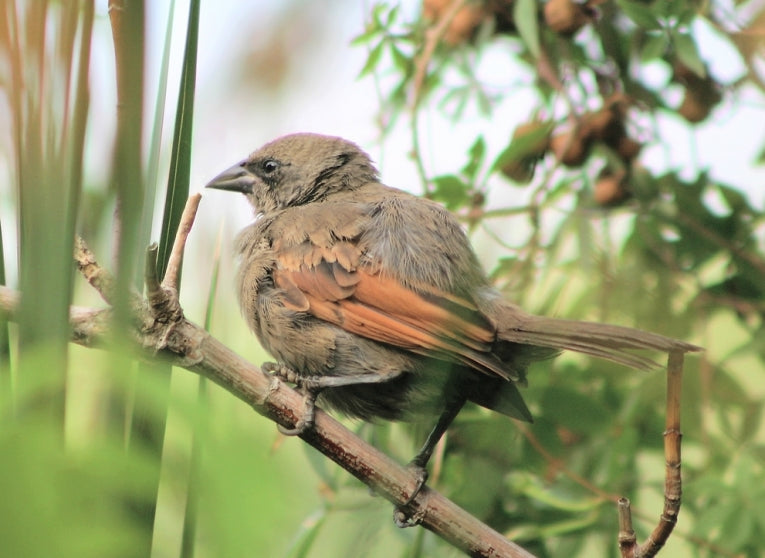A parasite and its host evolve so closely that often the parasite is tied for ever to its specific partner, while even the host can become dependent on the nuisance species!
Brood parasites have apparently not been much studied beyond the egg stage. Now listen closely. I will explain this only once! The screaming cowbird mimics the baywing while the related shiny cowbird is also parasitic but doesn't mimic the baywing.
Maria C. de Marsico, with her co-researchers, Mariela G. Gantchoff and Juan C. Reboreda from the Facultad de Ciencias Exactas y Naturales, Universidad de Buenos Aires, Ciudad Universitaria, took this useful natural situation and performed the ultimate experiment to prove that parasites mimic host offspring (after the egg stage). The Latin names could help, so the baywing is known as Agelaioides badius, while the two cowbirds are screaming cowbird with Molothrus rufoaxillaris and shiny cowbird with Molothrus bonariensis. To ease the situation, we'll call these two SCR and SH and the baywing, BW.

Baywing, screaming cowbird and shiny cowbird fledglings (from left to right); illustrating juvenile plumage coloration; Credit: © Proceedings of the Royal Society B: Biological Sciences

Brood composition at fledging of eight breeding groups of baywings observed over a week after fledging. Figures indicate number of fledglings of each species; bw, baywing; scr, screaming cowbird; sh, shiny cowbird. The last column summarizes the observations of non-mimetic shiny cowbird fledglings. All baywing and screaming cowbird fledglings were found alive by the end of the observation period.
With the common cuckoo, no Latin names are necessary (it sounds like its English name if you want to know), but the egg parasitism involves disposal of host eggs and nestlings by the parasite chick and the monster chick flying away looking nothing like its would-be nest-mates.
The screaming cowbird has obviously managed it better, along with parasitic finches and, possibly, bronze cuckoos,by mimicking the nestling to some extent. After the nestling stage, the SCR nestling begins to resemble the host fledgling more and more until they look identical. Five weeks later, the cowbird juveniles moult into their black adult plumage, but until then, mimicry seems to rule for the SCR.
Maria de Marsico and her co-workers agree in ascribing two possible explanations for the rejection on non-mimic fledglings. Parasites could adapt to host sensory systems and prefer the visual and vocal signals of their adopted species in order to encourage adequate parental care in competition with their brood-mates. Strangely, Maria has recorded in unpublished data, "pilot observations showed that screaming cowbird fledglings experimentally cross-fostered to chalk-browed mockingbird nests displayed similar begging calls than those raised by baywings .and were able to attract the attention of adult baywings from nearby territories."
Alternatively, it is possible that, having paid the cost of parasitism before fledging their brood, parents might find it selectively advantageous to reject the alien chicks late They would then regain some improved prospects for future survival or reproduction. Our screaming friend, the SCR becomes the latest weapon in an evolutionary arms race, which the SH is losing, because it's adapted to many more species as its host.
href="https://earthtimes.org/index.html">Nature News









